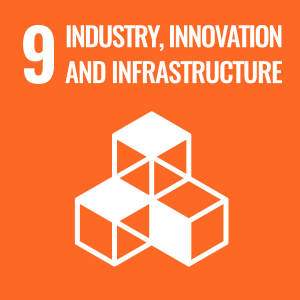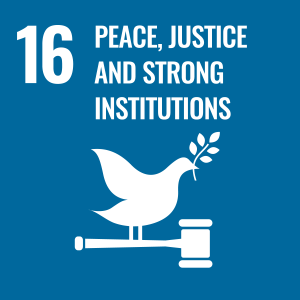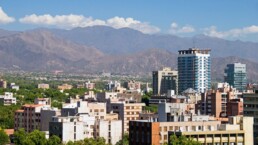BilbaoAccess
OBJECTIVES
Development and implementation of an automatic vehicle access control system for areas with special traffic conditions in order to regulate and control pedestrian preference zones and thus facilitate coexistence in these areas with the mobility needs of different groups (residents, shopkeepers, hoteliers, etc.).
The first area to be integrated into the new control system was the Old Quarter, and other pedestrian areas of the city will gradually be incorporated.
DESCRIPTION OF ACTIONS CARRIED OUT
• Definition of entry conditions and authorised profiles.
• Identification of the specific needs of Bilbao City Council and the different economic activities affected.
• Development of a Control Centre for the correct management, operation and compliance with access conditions.
• Definition of integrations with municipal and extra-municipal information systems.
• Development of a municipal mobile application so that users can manage their authorisations.
• Installation of 30 Control Points in the Old Town area.
• Development of tests in the 3 municipal environments and coordination with the Municipal Police in order to define the applicable sanctioning process.
KEY SUCCESS FACTORS
• Provision of a Citizen Service Office to provide information, both in person and by telephone, on the conditions of access to the Old Town site.
• Use of different communication strategies (information through municipal channels, information leaflets, etc.) to inform citizens about the implementation of the access control system.
• Clear definition of objectives and scope from the beginning of the project.
• Involvement of the different municipal agents: BilbaoTIK, Public Safety and Economy and Finance.
MAIN RESULTS ACHIEVED
• Promotion of sustainable mobility.
• Reducing the level of vehicles circulating in the Old Town, reducing greenhouse gases and the noise generated by them.
• The reduction in traffic has contributed to an increased sense of security among the elderly and increased local economic activity.
• The automation of registration processes has made it possible to speed up procedures for citizens with mobility needs.
• The automation of control processes has reduced fraud generated by unauthorised access to priority areas.
Bogotá Smart Territory
The Bogotá Smart Territory Policy establishes an implementation horizon from 2023 to 2032, promoting sustainable solutions based on data.
OBJECTIVES
Consolidate Bogotá as a Smart Territory by promoting the use and exploitation of data, technology and innovation by the actors and sectors of the territory, to solve problems and generate opportunities that improve people's quality of life.
DESCRIPTION OF ACTIONS CARRIED OUT
The Bogotá Territorio Inteligente 2023-2032 Public Policy is an initiative led by the High Councillor for ICTs of the General Secretariat of the Office of the Mayor of Bogotá. Its formulation process began in 2021 and went through different phases: preparatory, public agenda and policy formulation. As a result of this process, the final version of the action plan of the Bogotá Smart Territory Public Policy was generated. This action plan includes 7 specific objectives, 7 results and 36 products that will be the responsibility of 14 district entities of the Mayor's Office of Bogotá. The policy was approved on 31 May 2023 and is valid for 10 years.
KEY SUCCESS FACTORS
The Bogotá Smart Territory Policy establishes an implementation horizon from 2023 to 2032, promoting sustainable solutions based on data, technology, and innovation, and seeks an intersectoral intervention for the development of a smart territory in Bogotá.
MAIN RESULTS ACHIEVED
During the process of formulating the Bogotá Smart Territory Policy, the insufficient conditions were identified to develop a collective intelligence based on data, technology and innovation that efficiently responds to the city's problems. Sixty joint construction spaces were held with the participation of more than 24,000 people from different sectors, where the problematic situation was characterised, and strategic factors were defined using design thinking methodologies. Subsequently, the action plan was drawn up in 22 virtual roundtables with public servants and feedback was received from the entities, resulting in the approval of the Bogotá Smart Territory Public Policy on 31 May 2023, with 7 objectives, 7 results and 36 products in charge of 14 district entities for a 10-year period.

Digital Inequalities Observatory
When it comes to better understanding digital inequalities and improving the impact of local policies, there is a lack of tools. The creation of an observatory aims to fill this need.
OBJECTIVES
The constant renewal of the digital environment is threatening the ability to maintain contact with public administration, economic opportunities, health services and their social environment. When it comes to better understanding digital inequalities and improving the impact of local policies, there is a lack of tools. The creation of a local observatory aims to fill this need, through collaboration with other cities is a path towards greater comparability and benchmarking in the future.
DESCRIPTION OF ACTIONS CARRIED OUT
The observatory has emerged in two main stages. First, statistical work on existing data has made it possible to extrapolate the main characteristics of the population most affected by the digital divide. Then, a survey of 5,000 inhabitants allowed us to go a step further, refining the definition of the various priority groups, avoiding preconceived conclusions, and discovering new needs. The action has been developed with a constant reference to the digital skills sets at European level (DIGICOMP), again to ensure comparability in the future.
KEY SUCCESS FACTORS
The success of this project lies not only in the methodological soundness of its implementation, but it is also an opportunity, from the beginning and throughout its life cycle, to bring together a whole ecosystem of stakeholders interested in a better understanding of digital inequalities: social services at state, regional and municipal level, public and private partners, key players, on the ground, dealing with the consequences of digitally impaired citizens.
MAIN RESULTS ACHIEVED
The clear vision of the map and nature of digital inequalities, from connectivity to digital culture, digital skills, the ability to understand the changes, has achieved its main objective: to create lasting and operational knowledge. This main objective has organically generated another: the need to better represent the populations affected by the digital divide.

Intelligent processing: From Reactive Public Administration to Pro-Active
The implementation of the ATM's Digital Platform benefited more than 300,000 taxpayers in the province of Mendoza, who can now carry out their procedures online.
OBJECTIVES
Transformation of the State from reactive to proactive, cost reduction, operational efficiency, empowerment of public employees and care for the environment.
DESCRIPTION OF ACTIONS CARRIED OUT
In March 2020, the Mendoza Tax Administration (ATM) implemented its Digital Platform, allowing taxpayers to carry out all their procedures online. During the quarantine, ATM employees worked from home, training remotely to manage the procedures entered by taxpayers through the platform. Error and rework were reduced by establishing strict requirements for each procedure. Over time, automated services were added, and self-management of procedures became more common. This cultural change included the simplification of procedures and the adoption of electronic management, which resulted in greater transparency, faster and more accessible services, greater security, institutional efficiency, cost reduction and the freeing of physical space. Digital signatures and blockchain certification were implemented to prevent fraud. ATM integrated with other public agencies for the exchange of administrative information, saving time and resources and transforming the state from reactive to proactive.
KEY SUCCESS FACTORS
The pandemic prompted the digitization of the entire organization by reengineering processes through the implementation of the BPM (Business Process Management) methodology. In this sense, three key factors for the success of the initiative stand out: judicial notifications by means of geolocation mobile devices, automation of the single certificate of transfer of real estate and automation of the non-withholding and non-collection process.
MAIN RESULTS ACHIEVED
The implementation of the ATM's Digital Platform has benefited more than 300,000 taxpayers in the province of Mendoza, who can now carry out their procedures online. This has led to a 90% reduction in face-to-face attention. With the automation of the non-withholding and non-receipt procedures, specialized personnel have been freed up and an instant resolution has been achieved, which previously took hours. The processing of the single transfer certificate has also been automated, which has generated savings in time, costs, and transfers, in addition to reducing the margin of error.


BRISE - Building Regulations Information for Submission Envolvement
BRISE-Vienna's approach combines the high-tech planning tool Building Information Modelling (BIM) with Artificial Intelligence and Augmented Reality to create a comprehensive digital and automated approval process.
OBJECTIVES
Achieve a fully digital submission process for building permits, combining Building Information Modelling (BIM), Augmented Reality (AR) and Artificial Intelligence (AI).
DESCRIPTION OF ACTIONS CARRIED OUT
The BRISE - Vienna approach combines the high-tech planning tool Building Information Modelling with Artificial Intelligence and Augmented Reality to create a comprehensive end-to-end automated digital approval process.
In this context, the BRISE - Vienna solution lays an innovative foundation that will bring about a paradigm shift in the processing of building projects: from planning to submission and review procedures, all the way to acceptance of the finished building. BRISE - Vienna thus sets a new international benchmark in the field of digitalization of urban management processes.
KEY SUCCESS FACTORS
BRISE - Vienna was created in close cooperation between the Vienna administration and partners from TU Vienna, the Chamber of Civil Engineers Vienna, Lower Austria, and Burgenland, as well as ODE and WH Media. In addition, it involved 13 pilot partners as practitioners in the project, contributing their expertise and testing the practical feasibility of BRISE.
MAIN RESULTS ACHIEVED
The BRISE - Vienna project has achieved results such as fast feedback, visualization of building status, secure data access, automatic deviation analysis, efficient virtual negotiations and simplified and sustainable processes.

Kitchener Tech Connect
The program has been successful, with the participation of more than 1,410 seniors.
OBJECTIVES
Provide technology training and resources to older adults in the city to improve their social connections, information access and online safety.
DESCRIPTION OF ACTIONS CARRIED OUT
Among the actions developed within the framework of the program are free technology training in both virtual and face-to-face modalities (in the different local community centres). In addition, a technology loan program ("iPads" and "Chromebooks") is included, and they are helped to establish connections with community resources that lead to the resolution of their daily problems.
KEY SUCCESS FACTORS
Key enablers of the project's success include grant funding from the Government of Canada's New Horizons for Seniors program, as Kitchener Tech Connects began during the pandemic to support seniors in maintaining connections with family and friends.
MAIN RESULTS ACHIEVED
The program provides information and training to ensure that seniors can access vital services online, such as bill payments, grocery shopping or booking medical appointments. In addition, partnerships with community groups have helped implement the program and provide technical support.
The program has attracted considerable interest, with more than 1,410 seniors participating in 193 different classes.

Cybersecurity for citizenship: Training
Cybersecurity for citizenship: Training
OBJECTIVES
Thanks to the success of Bilbao WiFi, the City Council is in a privileged position to create new cyber-defense systems for its citizens, who can be individually alerted of the risks observed in their terminals and devices.
Basically, it is a matter of taking the concept of security offered by the Police in the world of atoms to the world of bits in cyberspace.
Bilbao WiFi detects and blocks malware, but citizens are not notified of these blocks, so the malware will remain fully operational when they connect to their mobile network or any other WiFi network.
Enabling this service (freely available to individuals) will allow citizens to be alerted that malware is observed in their traffic and that they should contact an expert center and/or install defensive measures. To solve this situation, Bilbao is launching a Citizen Cybersecurity Project.
DESCRIPTION OF ACTIONS CARRIED OUT
The Cybersecurity Project has become a key priority in the Bilbao City Council's citizen security policy.
Security on the network is a critical element for society in general and for citizens in particular, insofar as 20% of crimes already occur online and despite this, cyberspace remains a place that is not particularly protected for citizens by public authorities.
This Cybersecurity project is based on the creation of a real-time information platform to identify and block digital threats and inform each person individually and in real time of latent threats detected on their device. The project also integrates a Cybersecurity Awareness and Training Plan for Citizens, to provide them with tools for their protection in the digital world.
The project team has conducted seven workshops to test the key elements of the project (warning system, training, and communication) with the following target groups: - Seniors, - University students, - Teenagers, - People with functional diversity, - Professionals, - Citizens. 121 people participated in these test actions.
KEY SUCCESS FACTORS
The project covers a security area that is not particularly protected by the public authorities, which to a large extent continue to think almost exclusively about security in the physical world.
It integrates a Cybersecurity Awareness and Training Plan, in order to provide citizens with tools for their protection in the digital world.
MAIN RESULTS ACHIEVED
As a result of citizen feedback, several improvements were made to the prototype, some of which are as follows:
- Simplification of the enrollment and login process.
- Integration of a complaint report to the alert message, facilitating the legal process.
- Improvements in the explanation of privacy and how the City Council cannot (and does not try to) access personal information on the device.
- To ensure the success of the Cybersecurity service, design of a Communication Plan that was contrasted with the participants.
In relation to the second line of action of this Project: A Training Program was designed, contrasted with the participants and structured in three branches of knowledge: digital competences, digital identity and personal cybersecurity. Within each family, the topics about which citizens have a greater knowledge are:
- Application security and digital rights
- Personal data protection and fingerprinting
- Backup and use of passwords, device updates
The questions you would like to know more about are:
- Application security
- Personal data protection
- Safe shopping on the Internet and prevention of online scams
As a conclusion, it was deduced that, in general, participants have less knowledge about digital identity and conflict notification and telematic complaint process: personal cybersecurity.
Also, from Bilbao, the interest of this Project and its transferability to other national and international cities, such as Vienna, Amsterdam, Barcelona, Madrid, Malaga, Valencia, San Sebastian, Vitoria, Logroño, Dusseldorf, Monterrey, Moscow, Philadelphia, Prague, Quito, Santiago de Chile, Turin, was contrasted.
In recognition of the project, Bilbao was a 2021 Global Mayors Challenge Finalist City. Cybersecurity. Headings presented:
- Platform for the identification and blocking of digital threats detected in the municipal WIFI network, and in turn, inform the affected of the existence of such threat.
- Awareness programs and training programs for citizens. With this result, Bilbao was among the fifty cities around the world selected for its ideas in global innovation and transformative urban solutions that have emerged during the COVID-19 pandemic.










